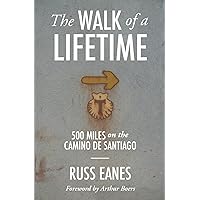The Impact of Religious Traditions on Spain’s National Celebrations
Spain’s national holidays** are deeply intertwined with religious traditions, reflecting a rich cultural tapestry rooted in Catholicism. While the country is known for its vibrant secular festivals, such as the Running of the Bulls in Pamplona and the lively Feria de Abril in Seville, many of its most cherished celebrations are steeped in religious significance. These events offer a glimpse into Spain’s historical relationship with the Catholic Church and highlight the enduring influence of faith on its cultural identity. From the solemn processions of Semana Santa to the joyful festivities of Christmas and the Epiphany, Spain’s religious holidays are a testament to the enduring power of tradition in shaping the nation’s character.
Semana Santa: A Passionate Display of Faith
Perhaps the most iconic of Spain’s religious celebrations is Semana Santa (Holy Week), held in the days leading up to Easter. This event is marked by elaborate processions that flood the streets of cities and towns across the country, each with its own unique character and traditions. In Seville, the heart of Semana Santa, more than 60 brotherhoods, or cofradías, participate in processions that feature ornately adorned floats, or pasos, depicting scenes from the Passion of Christ. The floats are carried by teams of costaleros, who bear the heavy weight as a sign of devotion. The processions are accompanied by the mournful sound of saetas, traditional flamenco songs sung from balconies along the route. In contrast, in Valladolid, the focus is on the religious art, with processions featuring life-sized sculptures by renowned artists like Gregorio Fernández. In the towns of Castilla y León, penitents called nazarenos walk barefoot, wearing pointed hoods and carrying crosses. The processions in Málaga are known for their lively atmosphere, with participants often breaking into spontaneous applause or reciting prayers as the floats pass by. Semana Santa is a profound expression of faith, but it also serves as a social event, bringing communities together and attracting thousands of tourists who come to witness the spectacle.
Christmas and the Epiphany: A Time for Family and Faith
Christmas in Spain is a time for family and faith, with traditions that reflect the country’s deep religious roots. The season begins with the Feast of the Immaculate Conception on December 8, when cities like Seville light up with festive decorations. On Christmas Eve, or Nochebuena, families gather for a lavish dinner, often featuring dishes like roast lamb or seafood, followed by traditional sweets such as turrón and polvorones. At midnight, many attend the Misa del Gallo, or Midnight Mass, to celebrate the birth of Christ. Christmas Day itself is a quieter affair, with families spending the day together. The holiday season culminates on January 6 with the Feast of the Epiphany, or Día de los Reyes Magos, when the Three Wise Men are said to have visited the baby Jesus. In the lead-up to this day, children write letters to the Reyes Magos, much like Santa Claus, asking for gifts. On the eve of the Epiphany, towns and cities host elaborate parades, known as Cabalgatas, where the Three Wise Men distribute sweets to the crowds. The following morning, children wake up to find presents left by the Reyes Magos. The day is marked by the sharing of a traditional cake called the roscón de Reyes, a sweet bread ring decorated with candied fruits and often containing a hidden figurine or bean. The person who finds the figurine is crowned king or queen for the day, while the one who finds the bean must buy the next year’s roscón.
La Tomatina: A Secular Celebration with Religious Roots
While not a religious festival in the traditional sense, La Tomatina in Buñol, a small town near Valencia, has its origins in a local religious celebration. Held on the last Wednesday of August, La Tomatina is a massive tomato fight that attracts thousands of participants from around the world. The event began in 1945 during a parade of gigantes y cabezudos, when a group of young people started a food fight using tomatoes from a nearby vegetable stand. The following year, they repeated the event, and it gradually became an annual tradition. Today, La Tomatina is officially sanctioned by the town and begins with the palo jabón, a greased pole with a ham at the top. Once someone retrieves the ham, a cannon blast signals the start of the hour-long tomato fight. Thousands of overripe tomatoes are trucked into the town square, where participants pelt each other with the fruit, turning the streets into a river of tomato juice. The event is a joyful, messy celebration of community and fun, drawing visitors from all over the globe. Despite its secular nature, La Tomatina is a reminder of how local traditions can evolve and adapt, blending religious and cultural influences into something uniquely Spanish.
The Enduring Influence of Religious Traditions
Spain’s religious traditions offer a window into the country’s rich cultural history, highlighting the enduring influence of the Catholic Church on its national identity. From the solemnity of Semana Santa to the joyous celebrations of Christmas and the Epiphany, these events bring communities together and reinforce the values of family, faith, and tradition. Even secular festivals like La Tomatina have roots in religious celebrations, illustrating the complex interplay between faith and culture in Spain. As the country continues to evolve, these traditions remain a vital part of its national character, offering a sense of continuity and connection to the past. Whether for locals or visitors, participating in these celebrations provides a deeper understanding of what it means to be Spanish and the role that faith plays in shaping the nation’s identity.





